Featured
Featured
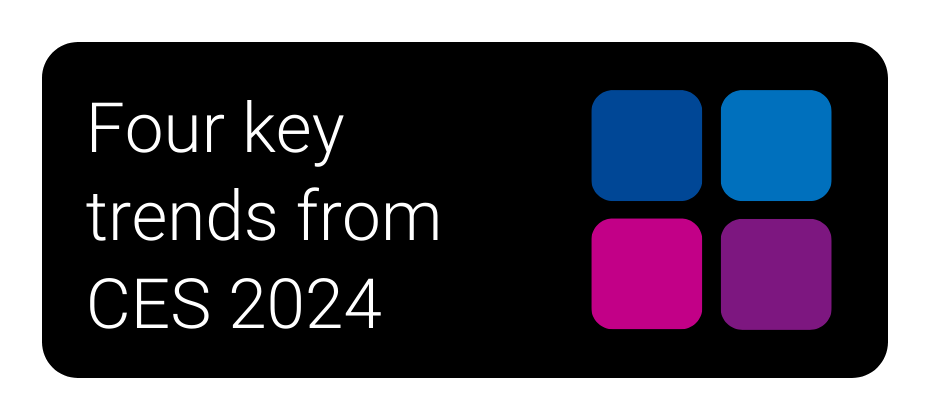
Every year, the Experian team attends the Consumer Electronics Show (CES) in Las Vegas, to immerse ourselves in the world's most significant consumer tech showcase and stay at the forefront of the latest technological advancements and innovations that shape the AdTech industry. This year's event was a vibrant melting pot of innovation and vision, from streamers taking a bigger bite of the advertising pie to the emergence of AI-powered solutions and drone delivery services. Amidst these advancements, the dynamic interplay of technology, media, and advertising raised important questions, especially in the context of evolving regulations and cookie deprecation. During CES, we captured insights from various thought leaders, and in the coming months, we'll be sharing these valuable perspectives with you. Watch the video below for full insights coming from our content studio onsite during the event. Or, keep reading for a recap on four key trends from CES and what they mean for your business in 2024! “My first CES was a major success. You could feel the buzz in the air as new ideas and partnerships were being created within and across industries. The intersection of the different players within retail media, connected TV, retail technology, the demand and supply-side, and agencies all in an ever-changing world of regulation and privacy begs for a solution that can maximize a successful outcome for all.”anne passon, sr director, sales, retail & cpg 1. Audience targeting: How first- and third-party data work together A central theme at CES was the importance of audience targeting, highlighting the crucial role of first-party data. However, it’s clear that to maximize its potential, this data needs to be augmented with sophisticated identity solutions and enriched with third-party insights, all while navigating the complexities of privacy regulations. This integrated approach is vital to understanding audiences and for creating more effective marketing strategies that comply with privacy regulations. 2. Standardizing metrics in retail media networks The challenges around retail media networks, particularly in terms of standardizing metrics like incremental return on ad spend (iROAS), were a hot topic at CES. This complexity around this topic underscores the need for neutral, expert third parties to help bring clarity and consensus, aiding businesses in navigating this multifaceted domain. 3. The challenge of switching data solutions Discussions covered the broader challenges associated with transitioning to new data solutions. For businesses, this involves a critical assessment of the benefits versus the costs and complexities of adopting new platforms or systems. This decision-making process is increasingly significant as data strategies become integral to marketing success. 4. Identity solutions in a cookieless future With the industry moving toward a cookieless future, the spotlight at CES was on the importance of robust identity solutions. Understanding the functionality and necessity of various universal IDs is essential to minimize data loss and maintain effective targeting. Investing in flexible and adaptable identity solutions like the Experian Graph is essential to maintain effective targeting and audience engagement in this new landscape. Announcements and advertising innovations at CES 2024 CES was a stage for significant announcements and innovative marketing initiatives: Criteo and Albertsons announced their collaboration in retail media. Instacart's partnership with Google for enhanced shopping ads and AI shopping carts. NBCUniversal's advancements in streamlining programmatic advertising. Brands like Netflix, LG, Freewheel, and Amazon Ads also captured attention with their creative marketing strategies, ranging from unique collaborations to themed promotions and captivating events. These insights from CES provide a glimpse into the future of technology, media, and advertising. They highlight the need for adaptability, innovation, and informed decision-making in these dynamic industries, especially in the context of privacy regulations. Stay tuned for our series of posts where we'll dive deeper into these topics, sharing exclusive insights from industry thought leaders. Follow us on LinkedIn or sign up for our email newsletter for more informative content on the latest industry insights and data-driven marketing. Contact us Latest posts

Short-form video content is becoming more prevalent on video-sharing platforms. Keep up with trends and alter your marketing strategy to stay relevant.
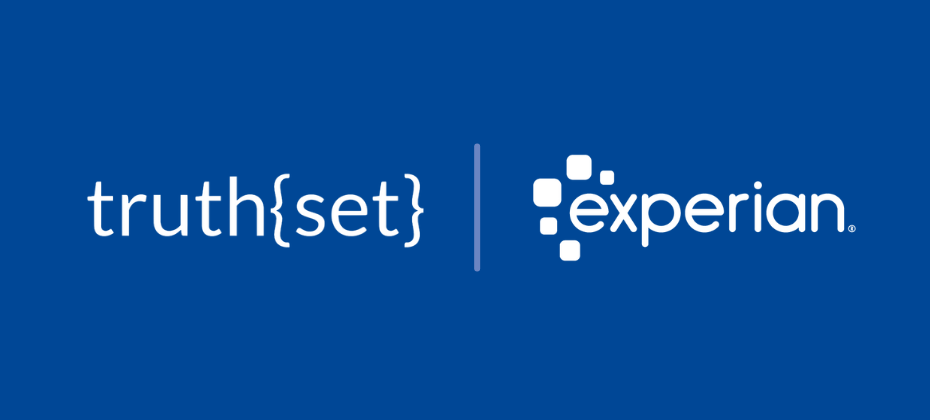
Experian continues to lead in data accuracy according to Truthset's latest analysis.

Programmatic TV can be an inexpensive option if you know where to look. Some platforms can offer a discounted path to prime-time ad spots on major networks.

As we approach 2024, marketers must grasp the evolving landscape of digital activation. Understanding emerging audience trends and activation strategies is key to developing impactful marketing initiatives and positioning your brand for success. In Experian's 2024 Digital audience trends and predictions report you'll find: Data-driven insights that will empower you to confidently develop marketing strategies that resonate with your audience and drive meaningful results. Insights from Experian experts and our industry-leading data. Our outlook for 2024 marketing trends. In this blog post, we'll provide a sneak peek of the 2024 marketing trends you can expect in our full report. Digital activation Digital activation grew by 63% between 2022 and 2023. We expect digital activation to increase in 2024 but at a slower rate than in 2023 due to economic uncertainty caused by high-interest rates, recent state privacy regulations, and work stoppages in the entertainment and automotive industries. Top digital audiences Which digital audiences are advertisers purchasing from Experian? We are seeing growth in four major data categories: Automotive, Demographics, Lifestyle and Interests, and Retail Shoppers: Purchase Based audiences. Here are a few audiences within these categories that you can activate on-the-shelf of your preferred platform: Automotive: Autos, Cars, and Trucks > In Market-Make and Models Demographics: Demographics > Homeowners/Renters > Renter Lifestyle and Interests: Lifestyle and Interests (Affinity) > Activities and Entertainment > Wine Lovers Retail Shoppers: Purchase Based: Retail Shoppers: Purchase Based > Food and Drink > Restaurants: Fast Food/QSR Chicken Frequent Spenders Top digital audiences by industry What are the top digital audiences being activated by industry? Download our 2024 Digital audience trends and predictions report to discover the top digital audiences in the following industries: Automotive Health Financial Services Retail & CPG Download our new 2025 Digital trends and predictions report Marketers, agencies, and platforms are facing new challenges as privacy regulations evolve, AI technology advances, and consumer behaviors shift. Our latest report highlights actionable strategies for navigating these changes and improving how you connect with audiences, measure impact, and deliver results. What you'll learn Navigating signal loss: Explore the rise of alternative IDs and contextual targeting as privacy regulations and signal loss reshape data-driven advertising. Connected TV (CTV): Understand the growth of connected TV (CTV), the importance of frequency capping, and strategies for effective audience activation. Omnichannel campaigns: Learn how marketers are moving from channel-specific strategies to audience-led omnichannel campaigns that tell a more cohesive story. Retail media networks: Learn how retail media networks (RMNs) are capitalizing on enriched first-party data to learn more about their customers and reach them across on-site and off-site inventory. Curation: Examine how curation is transforming programmatic campaigns by combining audience, contextual, and supply chain signals to deliver premium inventory packages that maximize addressability, efficiency, and performance. Download now Contact us Latest posts
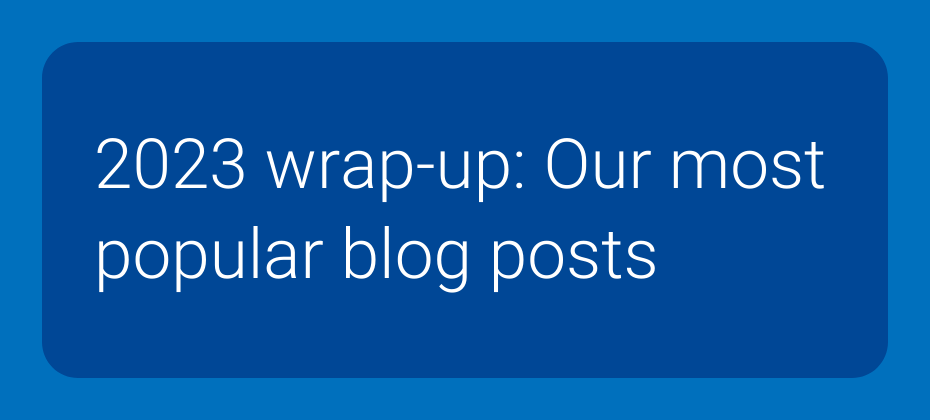
2023 has been an unprecedented year for AdTech. With new challenges arising every day — from ongoing signal loss to changing consumer privacy regulations– staying on top of trends is more important than ever before. To help you stay informed on successful tactics from across our ecosystem we’ve compiled a list of our top five 2023 AdTech blog posts. Keep reading to learn about the top themes from CES and Cannes this year, why contextual targeting is so popular, and more - so you can remain competitive in today's rapidly changing environment. #5 CES 2023: Clean rooms, activation, and more Experian attended CES in January to kick off the AdTech year, connecting with partners, clients, and industry leaders to understand their challenges and goals. Discussions were focused on clean rooms and digital activation to address data deprecation and consumer privacy. Clean rooms have the potential to standardize data and address interoperability issues. Digital activation was predicted to increase significantly in 2023, with more focus on demand-side, video, and supply-side platforms. Did digital activation increase in 2023? Download our 2024 Digital audience trends and predictions report to find out. Read our full 2023 CES recap here. #4 Experian identity resolution now available in AWS Clean Rooms Earlier this year, Experian announced that our identity resolution solution is now available in AWS Clean Rooms. Through this new partnership, customers can pair Experian's identity capabilities with AWS Clean Rooms to safely collaborate and access deeper insights without exposing sensitive data. Check out the full announcement to hear from Kalyani Koppisetti, Principal Partner Solution Architect at AWS, Matt Miller, Business Development Principal at AWS, and Tyler Middleton, Sr. Partner Marketing Manager at Experian. #3 Four key themes from Cannes Lions 2023 At Cannes Lions 2023, discussions revolved around four main themes: Signal loss: Experts discussed the importance of adapting paid media strategies to align with consumer behaviors. Collaboration: Discussions highlighted the need for industry players to collaborate and focus on solutions that benefit all stakeholders in the ecosystem. Personalization: This was a key topic and emphasized the growing significance of tailored content, data-driven insights, and first-party data solutions for advertisers adapting to cookie deprecation and the evolving consumer privacy landscape. Balancing AI and creativity: Attendees explored how to balance AI capabilities and nurture creativity while maintaining a human touch. Cannes 2024 will be here before we know it and Experian will be there. To get ready, check out this post by Tyler Middleton, Sr. Partner Marketing Manager, to hear from a first-time Cannes attendee, #2 Three key insights from our 2023 Holiday spending report Experian's annual Holiday spending trends and insights report analyzed recent trends, consumer spending habits, and anticipated what was to come in the 2023 holiday shopping season. This blog post covered three key insights from our report: Consumers are starting their holiday shopping earlier, particularly with online sales. Online sales have been increasing year-over-year, surpassing in-store sales. Spending during the 2022 holiday season was lower than in previous years but is expected to be on par with what was seen in 2023. For advice from our experts and access to all of our predictions for this year’s holiday shopping season, download our 2023 Holiday spending trends and insights report today. #1 How contextual ad targeting addresses signal loss Our most viewed blog post of 2023 was How contextual ad targeting addresses signal loss. Marketers are seeking new solutions due to signal loss caused by the phasing out of third-party cookies. Contextual ad targeting offers a way to combine contextual signals with machine learning for more accurate targeting. Experian's Jason Andersen and Yieldmo's Alex Johnston discuss the challenges of signal loss, addressability, the importance of good creative, and tips for digital ad success in this blog post. By understanding contextual advertising, marketers can create powerful and effective campaigns to reach target audiences. Subscribe to our newsletter Sign up for our email newsletter to receive our latest blog posts, product and partnership announcements, thought leadership, and more straight to your inbox. Subscribe Contact us today Latest posts
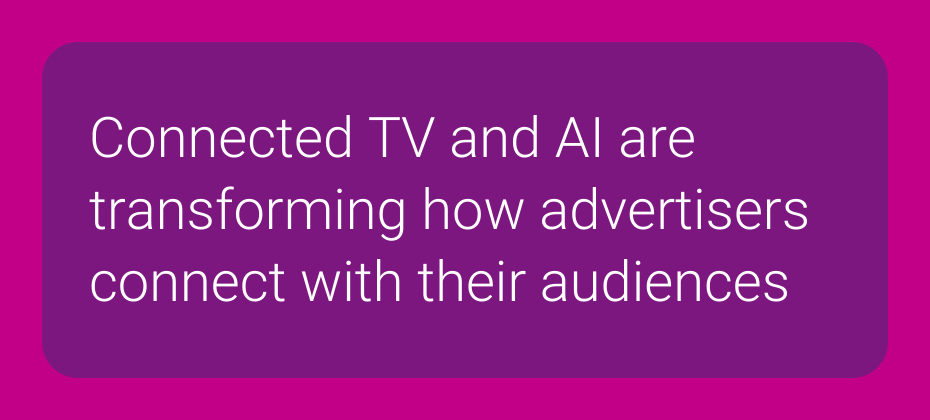
AI is working its way into all aspects of marketing. With connected TV, AI will soon be used to personalize ads for viewers while optimizing based on data.
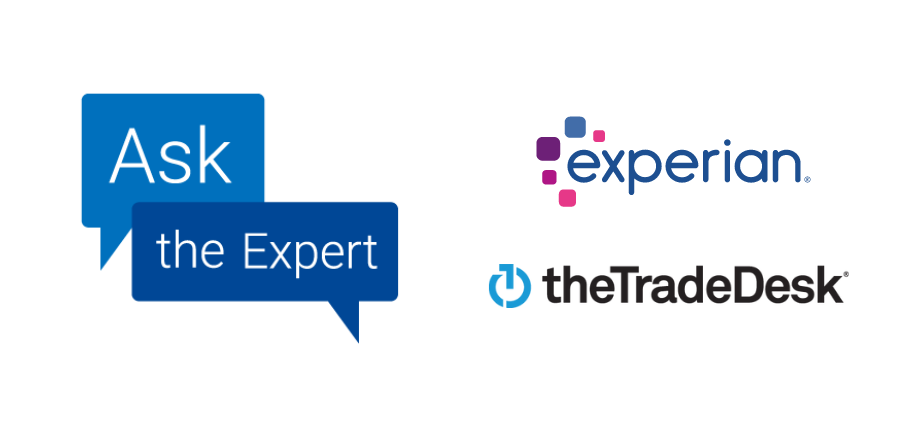
The digital advertising landscape is undergoing a significant transformation with the gradual deprecation of third-party cookies. This shift necessitates the adoption of new strategies for audience targeting and data management. In our next Ask the Expert segment, we explore this evolution, discussing new strategies for audience targeting and data management in a world without cookies. We’re joined by industry leaders, Gabe Richman, Senior Director of Data Partnerships at The Trade Desk, and Chris Feo, Experian’s SVP of Sales & Partnership who spotlight The Trade Desk’s innovative approach to navigating a cookieless future. Tune in to our Q&A below to learn more about these topics and learn how the collaborative efforts of Experian and The Trade Desk offer a glimpse into the future of advertising. Cookieless IDs are the new face of identity in advertising Traditional tracking and targeting techniques are being replaced by more advanced and privacy-conscious methods. Unified I.D. 2.0 (UID2), led by The Trade Desk, exemplifies this shift, offering a new identifier based on encrypted email addresses or phone numbers. This approach not only caters to the evolving privacy regulations but also places greater control in the hands of consumers. UID2’s design fundamentally differs from cookies since it is rooted in transparency and consumer consent. UID2: A catalyst for industry-wide adoption UID2’s journey reflects a rising industry-wide recognition of its value across the industry. The adoption of UID2 by major publishers, demand-side platforms, and advertisers indicates a shift toward more sustainable and consumer-friendly approaches to identity in advertising. This is particularly evident in areas like connected TV (CTV), where UID2 is rapidly becoming a currency and standard. “The purpose of UID2 is not only to create a better ID for advertisers and publishers to achieve their objectives, but also to benefit the consumers. Unlike cookies, UID2 provides transparency and control to the consumers for the first time.”gabe richman, sr. director, data partnerships, the trade desk How Experian and The Trade Desk work together The partnership between The Trade Desk and Experian goes beyond adapting to the absence of cookies. Our joint efforts highlight a commitment to developing solutions that cater to advertiser’s needs while respecting consumer privacy, a balancing act becoming increasingly crucial in today’s digital ecosystem. The Trade Desk's emphasis on UID2 as a foundational element in the open web, campaign design, and activation is a testament to the potential of new identifiers in enhancing advertising efficacy. Similarly, our ability to utilize these identifiers to deliver detailed audience insights offers advertisers a powerful tool to remain effective in a post-cookie world. Experian’s role in the adoption of UID2 Experian's integration strategies have played a critical role in diversifying the applications of UID2. By partnering with The Trade Desk, we help broaden the reach and effectiveness of UID2 across various advertising channels. In terms of reach – by incorporating a prominent cookieless ID, we further amplify the reach of UID2. The increased adoption of this new ID allows the digital ecosystem the ability to interact using an alternative identifier, thereby broadening the potential audience. In terms of effectiveness – we help advertisers serve relevant ads to the right audiences, ensuring the relevance of the ads and control over their frequency. Targeting with Geo-Indexed audiences The Trade Desk works with Experian to ingest and host our syndicated audiences. This partnership gives The Trade Desk’s clients access to over 2,400 syndicated audiences that span across eight verticals. This includes access to our new Geo-Indexed audiences that allow brands to reach consumers and households based on geographic regions that over-index for a common set of attributes, ultimately offering brands a targeting solution that prioritizes both consumer privacy and accuracy. What a future beyond cookies looks like Looking ahead, the focus in advertising is not solely on replacing cookies but on a broader evolution of the industry. This includes continuing to apply machine learning technologies, like artificial intelligence (AI), to enhance ad personalization and effectiveness. The interplay between creative content, audience insights, and privacy-compliant targeting will become increasingly important as the industry evolves. As cookies become a thing of the past, the initiatives spearheaded by The Trade Desk and Experian will likely set the tone for the next era of digital advertising, and emerging solutions like UID2 are leading the way. Watch the full Q&A Visit our Ask the Expert content hub to watch Gabe and Chris' full conversation about cookieless advertising. In their conversation, Gabe and Chris share more about UID2, consumer transparency, and the importance of consumer data for targeted advertising. Connect with us About our experts Gabe Richman, Sr. Director, Data Partnerships, The Trade Desk Gabe Richman is the Senior Director of Data Partnerships at The Trade Desk where he focuses on global identity strategy and platform partnerships as well as driving UID2 and EUID adoption across the broader ecosystem. Prior to joining The Trade Desk in 2021, Gabe held various roles in AdTech at HealthVerity, Wunderkind and LiveRamp. For the last decade Gabe has taken pride in helping advertisers and platforms alike demystify the complex identity landscape and embrace the change needed to preserve the open internet. Gabe is a graduate of the University of Maryland and resides in Los Angeles. Chris Feo, SVP, Sales & Partnerships, Experian As SVP of Sales & Partnerships, Chris has over a decade of experience across identity, data, and programmatic. Chris joined Experian during the Tapad acquisition in November 2020. He joined Tapad with less than 10 employees and has been part of the executive team through both the Telenor and Experian acquisitions. He’s an active advisor, board member, and investor within the AdTech ecosystem. Outside of work, he’s a die-hard golfer, frequent traveler, and husband to his wife, two dogs, and two goats! Latest posts
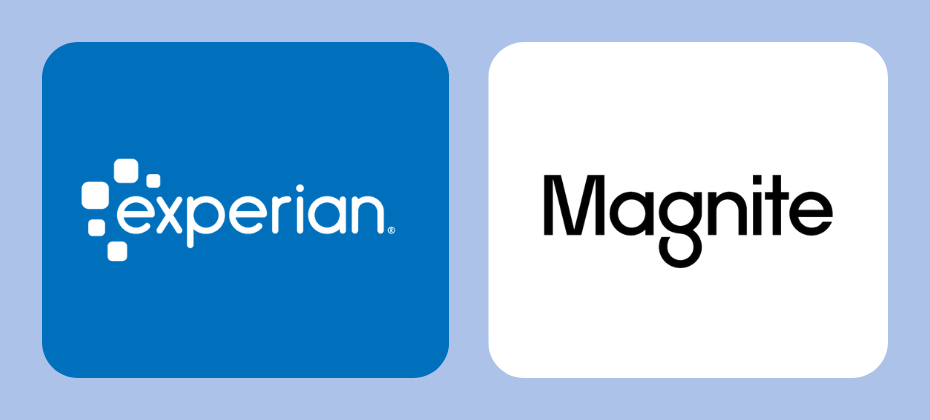
Magnite and Experian have formed a strategic integration to enhance cross-device audience targeting in the advertising industry. Magnite, the largest independent sell-side platform, and Experian, a leader in consumer data and identity solutions, aim to optimize advertising capabilities by activating Experian's Consumer View in Magnite Access, an omnichannel audience product suite. This marks one of Experian’s first forays into a direct sell-side integration, a crucial step for the cookieless era. This collaboration offers targeting and efficiency across digital channels, providing advertisers and agencies with a more effective way to reach consumers. With Experian's robust deterministic offline data, generated from consumer purchase activity, enriched with insights on over 250 million U.S. consumers and 126 million U.S. households, advertisers can look forward to a new benchmark in targeted advertising available through Magnite Access. Thriving in a cookieless world With the looming deprecation of third-party cookies, audience, and identity solutions using first-party data are shifting to the sell-side. To that end, Magnite developed Magnite Access, a suite of omnichannel audience products that make it easier for media owners and their advertising partners to maximize the value of their first-party data assets. Access is adept at thriving in a post-cookie world through its effective utilization of sell-side first-party data, including within Magnite Streaming and SpringServe. Magnite Access’ deterministic and probabilistic tools provide sellers and buyers with a comprehensive solution to leverage their first-party data for audience targeting and insights. Experian's solutions are built to work efficiently in offline environments, making them well-equipped to thrive in a cookieless world. Brands can benefit from Experian's deep integrations within the ecosystem, providing data and audience solutions designed to perform in cookieless environments. "We're excited about the collaborative approach between Magnite and Experian. This off-the-shelf integration of Experian's syndicated audiences and the streamlined ability to receive custom audiences will provide a more accurate and cohesive consumer view, allowing us to reach our target audience and enhance campaign performance seamlessly."sam bloom, ceo, camelot Reach and impact As companies continue to rely on data-driven insights to make smarter, more efficient business decisions, partnerships between leading data and technology providers are becoming increasingly valuable. "Integrating with Magnite allows us to translate our extensive offline and online data into actionable, intelligent solutions for making smarter, more efficient business decisions. With Magnite's expertise in the omnichannel sell-side environment, this partnership is poised to empower businesses with the tools they need to succeed in today's data-driven landscape."chris feo, svp, sales & partnerships, experian Strengthening foundations within streaming Magnite's cutting-edge streaming solutions, integrated with Experian's robust data, facilitate a connection between data and inventory, providing enhanced targeting capabilities and consumer insights. "By integrating Experian's Consumer View capabilities into our platform, we are enabling advertisers to unlock improved targeting capabilities while benefiting from Experian's wealth of consumer insights. Our collaboration with Experian amplifies the value of our streaming solutions and enhances the overall advertising ecosystem by seamlessly connecting data, identity, and inventory."kristen williams, svp, strategic partnerships, magnite Precision and innovation: A new advertising era The synergistic partnership between Magnite and Experian is paving the way for a new era in advertising, offering targeting efficiency across digital channels. This collaboration is not merely a confluence of technologies but a testament to both companies' relentless pursuit of excellence in creating a consumer-conscious advertising ecosystem. By harnessing the wealth of consumer insights and integrating state-of-the-art technologies, Magnite and Experian are contributing to shaping the future of advertising, emphasizing accuracy and efficiency. It's a revolutionary stride toward understanding and reaching the consumer in more meaningful and impactful ways, setting new benchmarks in the advertising world. In a rapidly evolving digital landscape, this collaboration stands as a beacon, guiding brands toward intelligent, informed, and innovative advertising solutions, redefining the possibilities in targeted advertising and audience solutions. Connect with us to learn more about how you can access Experian’s Consumer View data solutions in Magnite Access. To learn more about our partner Magnite, visit their website. Latest posts